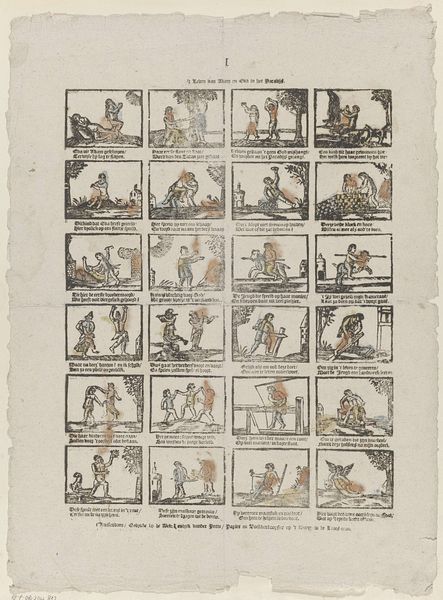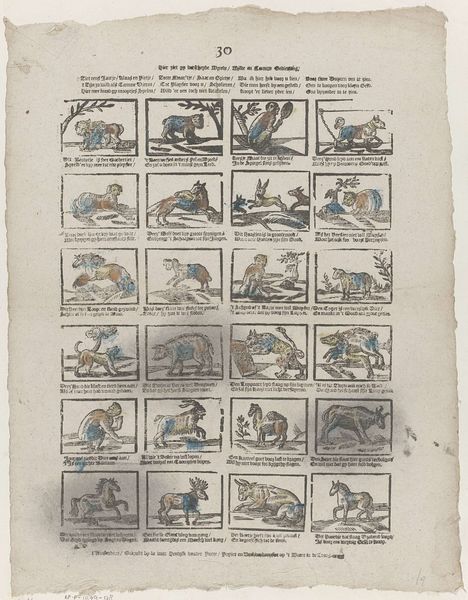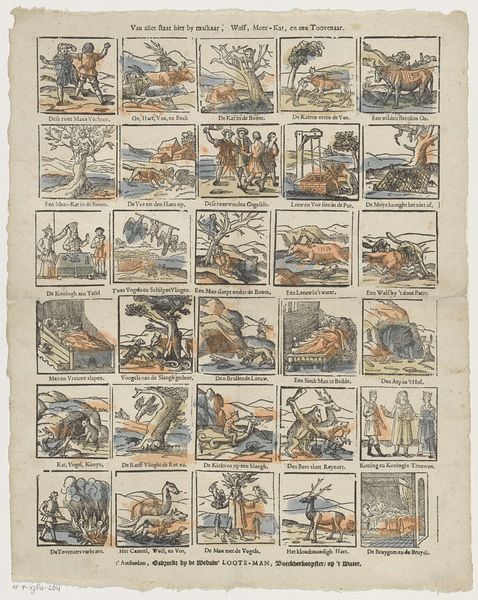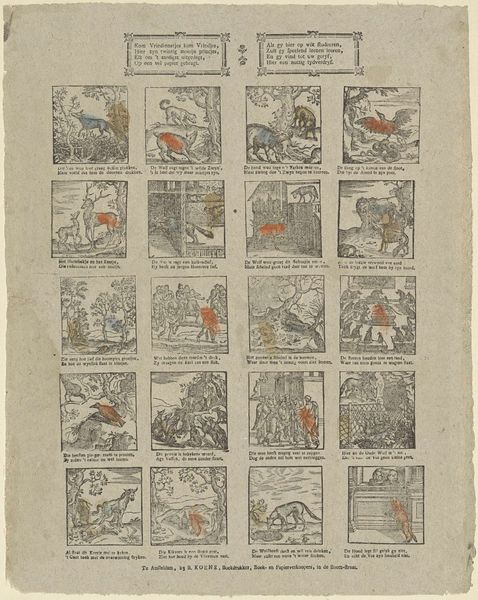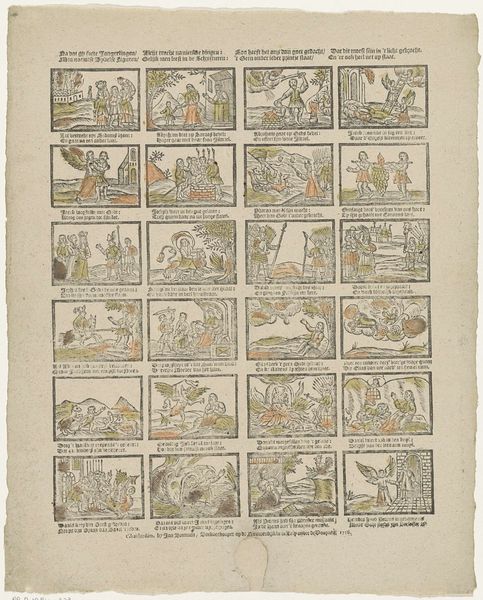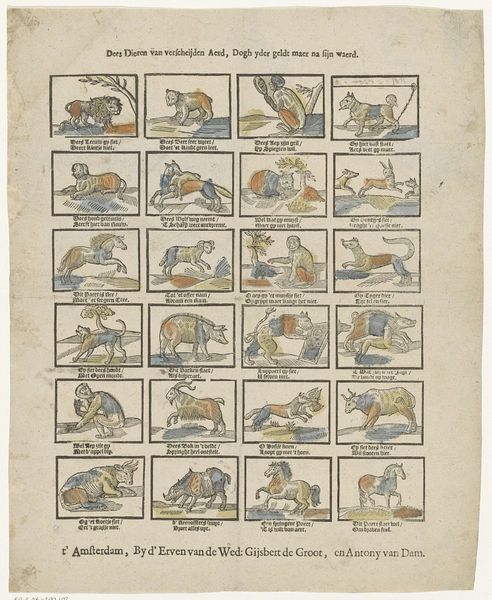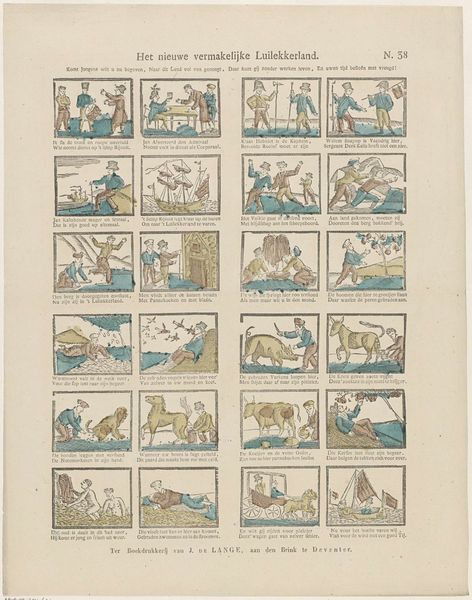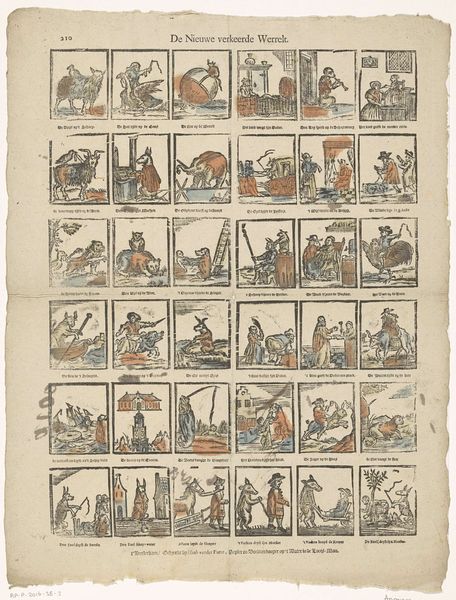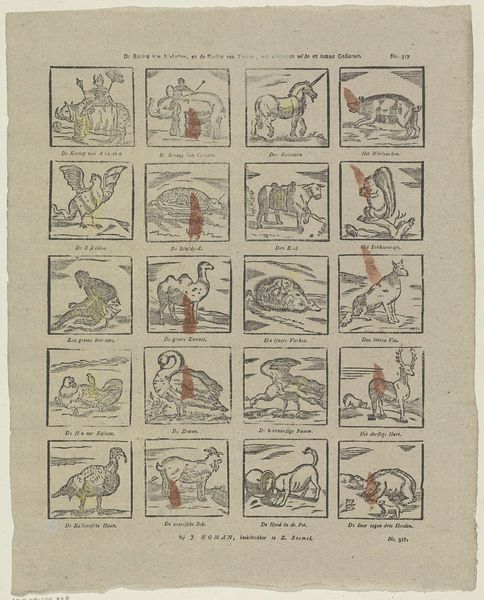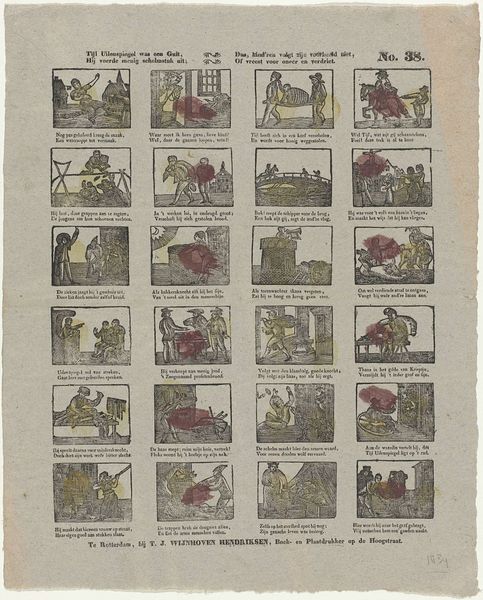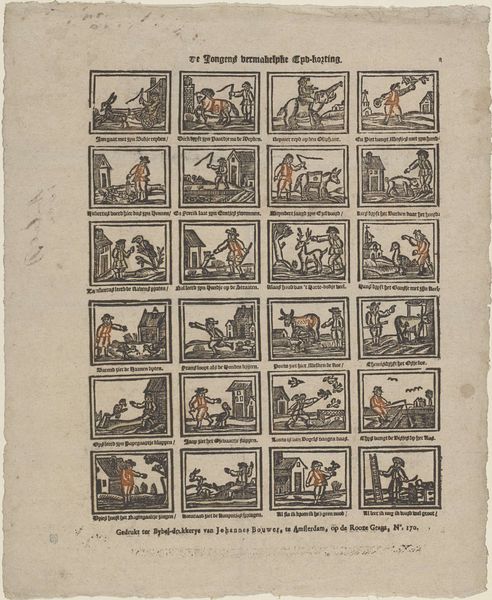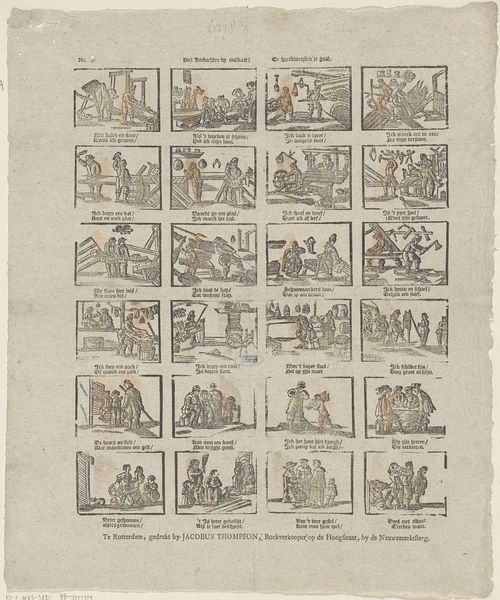
Wie by het lesen schept pleysieren / Die leest dees vier-en-twintig dieren, Die brengn elk haar letter mee / van het gehele A / B / C 1765 - 1767
0:00
0:00
print, engraving
#
narrative-art
#
dutch-golden-age
# print
#
figuration
#
folk-art
#
genre-painting
#
engraving
Dimensions: height 363 mm, width 310 mm
Copyright: Rijks Museum: Open Domain
Curator: Editor: This engraving, "Wie by het lesen schept pleysieren..." from around 1765-1767, attributed to the workshop of weduwe Hendrik van der Putte, depicts 24 animals, each paired with a letter of the alphabet. It almost feels like a child's learning tool. What can you tell me about this from your perspective? Curator: From a materialist perspective, I find it fascinating to consider the printing process itself. These engravings were often produced in workshops, suggesting a collaborative labor force dedicated to mass production. We should be thinking about the accessibility of these printed alphabets, were they common, or luxury items for a small educated elite? Editor: That’s an interesting point. I hadn’t considered how the production process itself might impact access. Curator: Exactly! And consider the distribution network. Were these prints sold locally, or did they circulate more widely, influencing a larger population? Thinking about this artist specifically: a female led studio would influence what and how artworks like these are created. How do you think the prints and the themes they represent helped teach children the moral lessons society at that time wanted to pass on to younger generations? Editor: That’s a really important question. I suppose by associating letters with recognizable animals and brief descriptions, it could help children remember what the letters mean. Curator: Precisely, and the images themselves offered visual and narrative cues related to behavior and identity. It prompts us to look closely at these “everyday” objects and realize that they tell the hidden, intricate story about that period and social standards of conduct. These prints weren’t simply educational aids; they actively participated in shaping young minds through careful construction and dissemination of moral values! Editor: I hadn’t thought about how materials and processes have shaped its function, beyond simply a method of reproduction. Thank you for the insight. Curator: My pleasure!
Comments
No comments
Be the first to comment and join the conversation on the ultimate creative platform.
